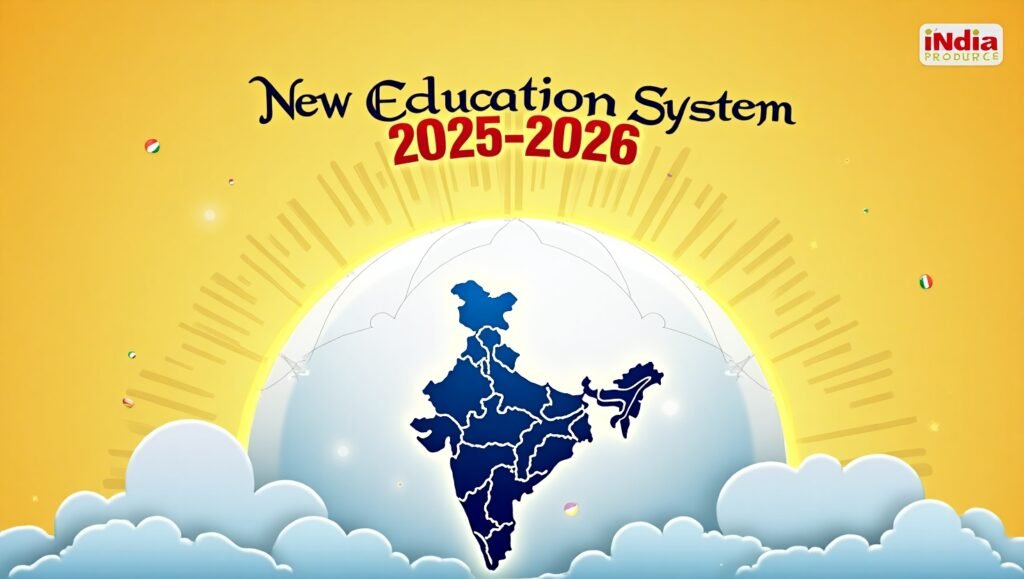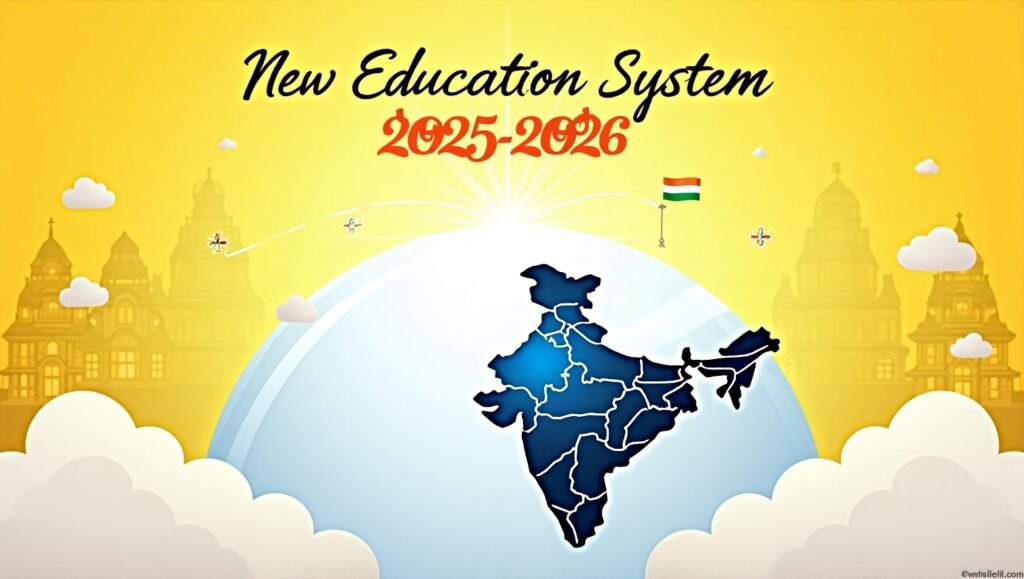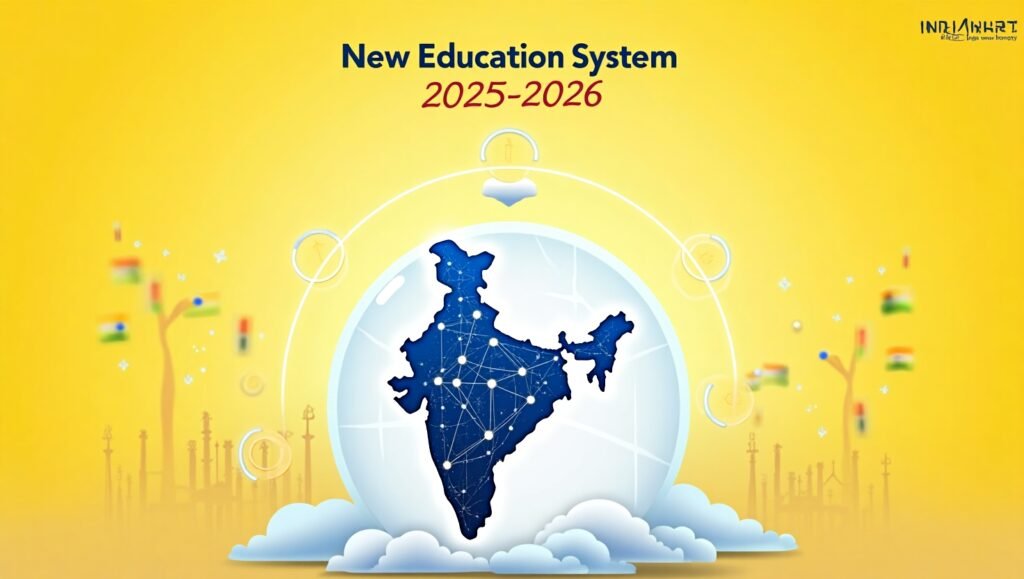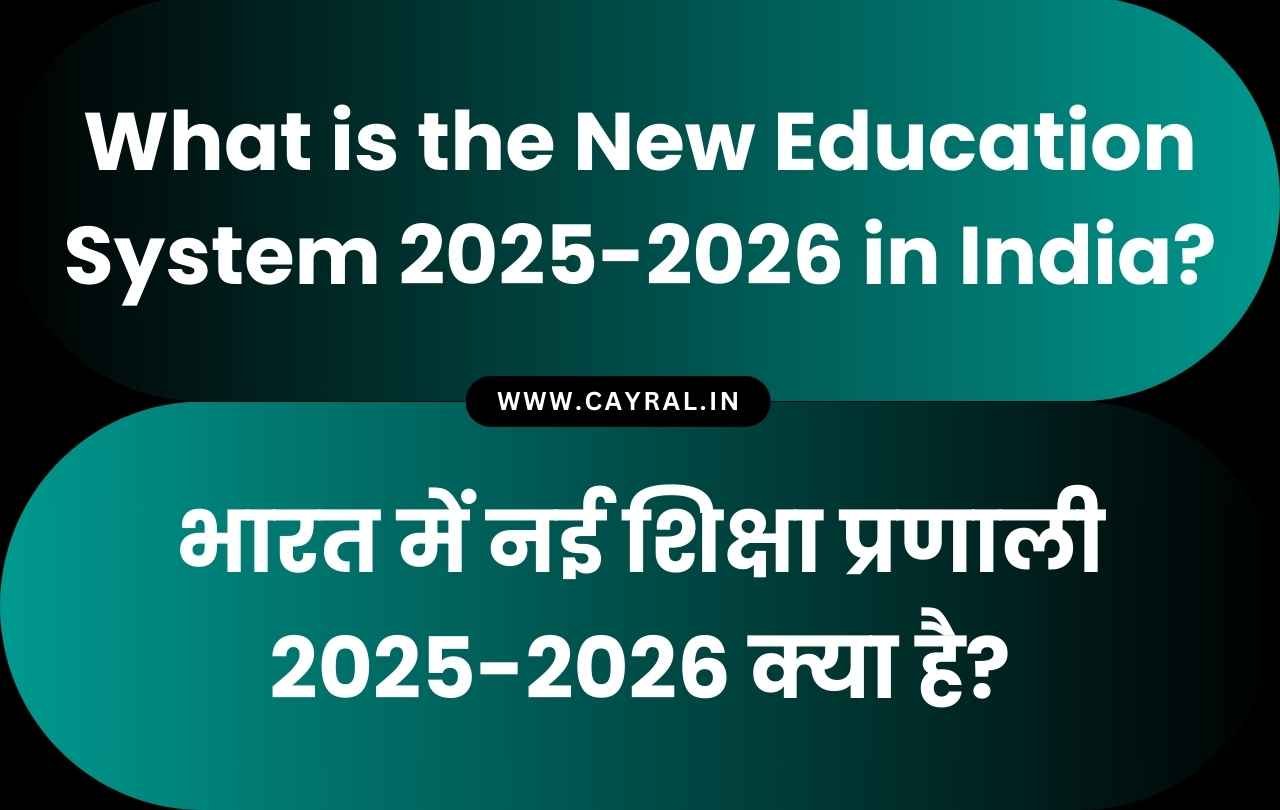What is the New Education System 2025-2026 in India? India’s education system has been undergoing significant transformation in recent years. With the implementation of the National Education Policy (NEP) 2020, the academic framework for 2025-2026 will witness various new reforms aimed at enhancing skill development, critical thinking, and holistic learning. This article explores the upcoming changes in India’s education system, their impact on students, and how they align with the evolving global landscape.
What is the New Education System 2025-2026 in India?

Key Features of the New Education System (2025-2026)
1. Structural Shift: 5+3+3+4 Model
The traditional 10+2 system is being replaced by the 5+3+3+4 model, which is aligned with international standards. The breakdown is as follows:
- Foundational Stage (5 years) – Includes three years of preschool and two years of primary education (ages 3-8).
- Preparatory Stage (3 years) – Covers grades 3 to 5 (ages 8-11), focusing on experiential learning.
- Middle Stage (3 years) – Covers grades 6 to 8 (ages 11-14), emphasizing skill-based learning.
- Secondary Stage (4 years) – Covers grades 9 to 12 (ages 14-18), allowing for greater flexibility and multidisciplinary approaches.
2. Emphasis on Multidisciplinary Learning
- Students will have the freedom to choose subjects across streams (Science, Arts, Commerce) instead of being restricted to rigid categories.
- Interdisciplinary education will allow a mix of technology, vocational training, and creative subjects.
3. Introduction of Vocational and Skill-Based Training
- By grade 6, students will engage in internships and skill-based learning.
- The curriculum will include coding, artificial intelligence, data science, and digital literacy.
- More focus on entrepreneurship and financial literacy to prepare students for self-employment.
4. Mother Tongue as Medium of Instruction
- Regional languages will be promoted as the primary medium of instruction at least until Grade 5.
- This is aimed at improving cognitive skills and comprehension.
5. Examination Reforms
- Board exams will become more competency-based, testing analytical and application skills rather than rote memorization.
- Students will have multiple attempts to improve their scores.
- Continuous assessment methods will be prioritized over final exams.
6. Integration of Technology in Education
- Smart classrooms, AI-powered learning platforms, and Virtual Reality (VR) labs will be introduced.
- The government will focus on blended learning (offline + online education).
- The National Digital Education Architecture (NDEAR) will facilitate a centralized digital repository for students and teachers.
7. Higher Education Reforms
- Multiple Entry & Exit Options: Students can leave and rejoin college at different stages with certifications:
- 1 year – Certificate
- 2 years – Diploma
- 3-4 years – Degree
- Establishment of Multidisciplinary Education and Research Universities (MERUs).
- Common university entrance exam (CUET) across India.
8. Assessment Changes: Holistic Progress Cards
- The traditional mark-based report card will be replaced with a 360-degree holistic progress card, focusing on:
- Academic performance
- Skills & extracurricular activities
- Emotional and social intelligence

Impact of the New Education System on Students
Pros:
✔️ Encourages critical thinking and creativity ✔️ Reduces exam pressure with continuous assessment ✔️ Increases employability through skill-based education ✔️ Provides greater flexibility in subject selection ✔️ Enhances accessibility through digital education initiatives
Challenges:
⚠️ Implementation across rural areas may be slow ⚠️ Teacher training and digital infrastructure need improvements ⚠️ Balancing traditional and modern approaches effectively
Future of Education in India Beyond 2026
The education system in 2025-2026 is only the beginning of long-term reforms. Future trends may include:
- Integration of Artificial Intelligence in teaching
- Increased use of gamification and immersive learning
- More personalized education paths based on student aptitude
- Global collaborations for higher education advancements

Conclusion: What is the New Education System 2025-2026 in India
The New Education System (2025-2026) in India aims to bridge the gap between academic knowledge and real-world skills. With an emphasis on holistic learning, digital education, and flexibility, it prepares students for a dynamic future. However, its success will depend on effective implementation, teacher training, and infrastructure development.
FAQs: New Education System 2025-2026
How is the new education system in 2025-2026 different from the old one?
It shifts from rote learning to skill-based, multidisciplinary education with an emphasis on practical knowledge and technology.
Will board exams be removed in 2025-2026?
No, but they will be less stressful and more competency-based.
What subjects will be added under the new system?
Coding, AI, financial literacy, entrepreneurship, and vocational training.
What is the major benefit of the 5+3+3+4 system?
It provides age-appropriate learning stages, ensuring better cognitive development.
How will students benefit from skill-based learning?
It increases employability, prepares them for self-employment, and reduces dependency on traditional degrees.
Will the new education system apply to private schools?
Yes, all schools across India will follow the NEP 2020 guidelines.


Leave a Reply
You must be logged in to post a comment.